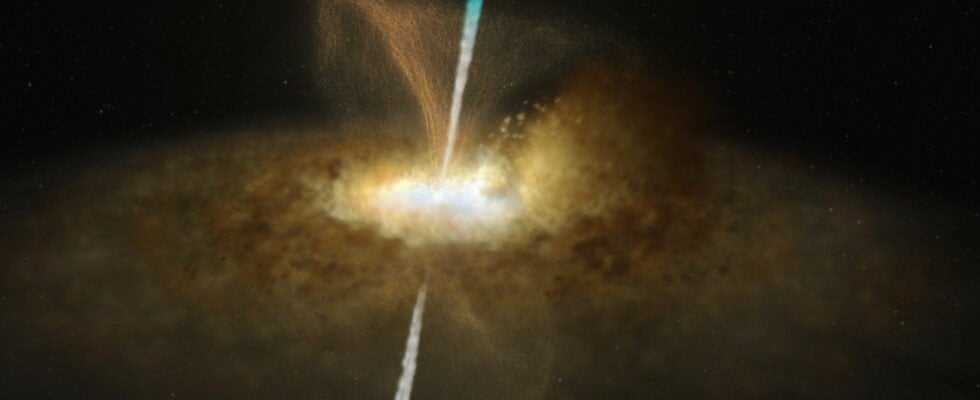Behind a thick disc of dust, hid a gigantic black hole. This is the discovery that scientists have just made. It makes it possible to advance in the knowledge of the active nuclei of galaxies.
A colossal black hole was eclipsed by a ring of cosmic dust. In a study published on February 16, 2022 in the journal Naturescientists tell how they were able to observe a disc of dust and gas, thick and dense, which concealed a giant: a supermassive black hole.
It was by studying the center of the spiral galaxy Messier 77 (or NGC 1068), located in the constellation of the Whale more than 47 million light-years from our planet, that researchers detected the presence of ring, which hid the black hole. Its exact mass is not given in the study, but according to other works it would be equivalent to 8 times that of the Sun.
An active galactic nucleus: what is it?
Their discovery is important for progressing in the knowledge of what are called active nuclei of galaxies: extremely energetic sources powered by supermassive black holes that occupy the center of some galaxies “, describes the European Southern Observatory (ESO) in a press release presenting the study. These black holes gather dust and gas in immense quantities. This matter gathers in a form of spiral around the black hole, which releases very important quantities of energy.
However, this observation of the surroundings of the black hole of Messier 77 confirms the validity of a theory about active nuclei, underlines the ESO: the Unified Model of AGNs (for “Active Galactic Nucleus” in English). According to this model, all the active nuclei of galaxies would have the same structure, despite their differences (some shine more than others; release jets of radio waves, or not). This structure being composed of a supermassive black hole, surrounded by a large ring of dust.
Nevertheless, in the case of Messier 77, there were still doubts: we were not sure that all this dust conceals the presence of a black hole. It was assumed, because it may explain why this active nucleus is less bright in the visible light range, compared to others.

To peer through this dust, the scientists used the Very Large Telescope Interferometer (VLTI), at the Cerro Paranal Observatory, in Chile. The images, obtained in September 2018 and November 2019, made it possible to learn more about the temperature and absorption of the gaseous clouds located on the periphery of this large black hole. He was able to be located. ” The dust – which makes up a bulky inner ring as well as a larger disk – and the black hole positioned in its center argue in favor of the Unified Model “, sums up the ESO.
